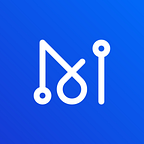While making blockchain sync with AI, MATRIX seeks to launch intelligent contracts with no programming required
Recently, 36Kr, one of China’s biggest tech media companies, composed an article about MATRIX. Here, we’ve translated it into English for your better understanding.
Source: http://36kr.com/p/5143586.html
Will programmers lose their jobs?
In previous reports, we discussed the benefits of integrating AI and blockchain. In general, blockchain can improve AI’s reliability and ensure safe data transmission. Such projects as Project PAI and Bizhihui are going to integrate blockchain and AI. One wonders, what benefit will AI bring to blockchain technology?
Currently, the MATRIX team is going to build an open-source public blockchain based on artificial intelligence. As a result, blockchain will provide reliable environment for the data interaction of artificial intelligence, and artificial intelligence will transform traditional smart contracts into intelligent contracts whose programming will be completed by AI, facilitating broad access to smart contracts.
In intelligent contracts, ordinary users can enter the transaction purpose in a natural language (for example, Chinese) and describe transaction conditions, and AI will write the intelligent contract programming, thinking in human being’s language, thus automatically generating a usable, intelligent contract. AI will continue to deep learn from more contract samples and deals with more complicated contract conditions.
Meanwhile, MATRIX is adding formal verification technology, (which can be considered an anti-virus software for blockchain,) based on AI to its intelligent contracts. During the formation of intelligent contracts, the formal verification technology of AI actively mines codes and the contract for bugs, at the same time, GAN (generate against network) will perform a rival disk simulation before a contract takes effect, and continuously simulates self-attacks to find if there are bugs for illegal profit in the contract.
With regard to the consensus mechanism of blockchain, MATRIX has adapted the mechanism of “super node + POW” and wants to meet the need of performance and safety while ensuring decentralization.
MATRIX wants to use AI technology to randomly generate 32 super nodes from all nodes, then randomly select 21 nodes from the super nodes as mining nodes, the remaining will be 11 validator nodes. The selection of super nodes is random, and their grouping is replaced in each election cycle.
The 21 mining nodes responsible for mining are not successive package transactions, and during transactions, there is a computing power competition system which is similar to the POW system. The validator node votes according to transmission speed and blockchain output efficiency and conducts adjustments and validation for the mining nodes of the final generated block.
Although the randomness requirement can be met by designing a random function, John Zhu, Vice President of MATRIX, mentioned that during random judgment, AI could process and analyze a large amount of data so as to improve the random efficiency and prevent random results from being affected.
According to John Zhu’s introduction, currently, MATRIX has realized 50,000 TPS under lab conditions. Simultaneously, AI will prejudge nodes and then put nodes which may launch malicious attacks in a specific pool for observation. When nodes are judged to be normal, AI will return the nodes to the original node list in a recursive way, with the recurrent neural technology. Kaidong says that the AI which was used to prejudge the nodes had already learned and trained for a year and a half.
“The current barrier of AI + blockchain is hardware development, and MATRIX wants to develop its own miner chips next.” John Zhu believes that by integrating the programming for the algorithms of AI deep learning and the model program into chipsets, can prevent the algorithm and model from being tampered with, solving algorithm security issues. Data can be transferred to the chip models for processing, without going through the bus, CPU, graphics card, etc., leading to higher speeds.
With regards to our team, MATRIX has over 70 members in total, among which 36 are technical R&D personnel. Owen Tao, CEO of MATRIX, has acted as the CEO of high-tech companies for many years, has experience in product development, and has taken charge of 3D virtual communities, built-in game advertisement systems, and other internet technology products. Steve Deng, Chief AI scientist of MATRIX and an associate professor at Tsinghua University, has published over 50 professional papers and leads a team in charge the design of our AI algorithm and R&D of the hardware and design of AI intelligent chips. Core members of the MATRIX blockchain team have R&D experience with major companies such as, Microsoft, Facebook and Google.
Currently, MATRIX is cooperating with the One Belt and One Road Development Research Center and provides technical support for AI and blockchain at the center. With regard to specific applications, MATRIX has implemented a demo project for Beijing Cancer Hospital, adapting AI + blockchain to facilitate the diagnosis of thyroid nodules. There have been nearly 260 thousand registered users and nearly 25 thousand holders of MAN (the official token of MATRIX), and MAN has been launched in 12 separate exchanges.
Matrix AI Network leverages the latest AI technology to deliver on the promise of blockchain.
FOLLOW MATRIX:
Website | Github | Twitter | Reddit | Facebook | Youtube | Discord
Telegram (Official) | Telegram (Masternodes)
Owen Tao (CEO) | Steve Deng (Chief AI Scientist)
